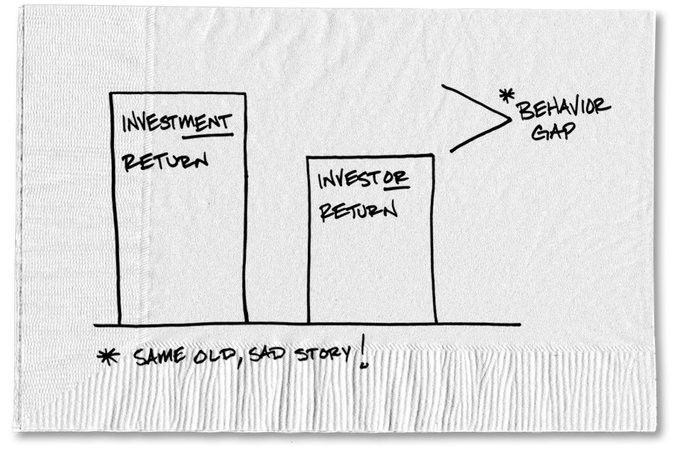Deflation Investments How to Protect Yourself if Prices Fall CBS News
Post on: 10 Июль, 2015 No Comment

Last Updated Sep 13, 2010 12:54 PM EDT
Investors need to kick the inflation state of mind. You’re huddling in short-term bond funds or fretting about a bond bubble because you’re sure that hyperinflation lies right around the corner. But the case against it is stronger than you think. Consumer prices rose only 1.2 percent in July, compared with a year ago. Near-zero inflation or mild deflation is the stronger bet.
Long-term bonds and certificates of deposit would be the right investment, in that kind of world. Stocks could outperform, too, as long as deflation doesn’t get out of hand. Dividend stocks get especially interesting. Even if dividends don’t rise, they’d be worth more in purchasing power if the general price level declined.
What sparks inflation fears is the widely held belief that the government has been printing money, with the federal deficit as Exhibit A. But the public has this wrong, says economist Lacy Hunt of Hoisington Investment Management.
It’s true that, during the credit crisis, the Federal Reserve puffed up its balance sheet by buying toxic assets from financial institutions. It also bought Treasuries, to add liquidity to the banking system. But those actions don’t print money, Hunt says. Commentators who throw that phrase around often don’t know what they’re talking about.
Money is the legal tender that you can readily exchange for goods and services. It’s the cash in your pocket and your checking account, plus savings accounts, short-term certificates of deposits, and similar liquid caches. Technically, the Fed calls this M2.
Too much money sloshing around in an economy can drive prices up, but that’s hardly the case today. M2 has risen only 2 percent over the past 12 months, Hunt says. That’s the slowest rate of increase in 15 years and less than one-third of the average increase over the past 110 years. It’s helping to keep inflation on the barely-positive side but can’t fuel a surge.
What’s more, that money isn’t turning over very fast. Banks aren’t pumping out loans to create new deposits, against which even more loans could be made. The turnover rate, called velocity, historically declines when the banking system is digging out of an excessive lending spree, Hunt says. We’re getting less bang for each buck.
The third piece of this story is excess capacity in the economy — too many unsold houses, too much empty retail space, too many people unemployed and tapped out. Even if business improves and demand picks up, so much unsold inventory will appear on the market that prices could still hold flat or fall.
In a normal business cycle, you get a year or two of pain followed by five or six years of gain. But economies don’t function in the normal pattern during periods of heavy indebtedness, Hunt says. Increased government spending provides a temporary boost. Then you roll back.
Deficits don’t automatically lead to inflation, as some people think. Japan’s deflationary cycle is in its 15th year, despite (or because of) a government debt that now stands at 200 percent of gross domestic product. (In the U.S. the debt held by the public has reached 53 percent of GDP.)
No one can predict the future, which is what makes investing such a risk. But there’s no sense in hedging only against inflation in these difficult times. You need a deflation hedge, too. Here’s what to consider:
Long-term Treasury bonds and bond funds. Long Treasuries currently yield 3.7 percent. If yields decline just one percentage point, to 2.7 percent, you’d pocket a one-year gain of 23.4 percent. Do you doubt that Treasuries could fall that far? In 1941, they dipped as low as 1.9 percent.
Wasatch-Hoisington’s U.S. Treasury Fund invests primarily in bonds maturing in 20 years or more. It’s up almost 19 percent this year and 8.9 percent a year over the past 10 years. We will stay with long bonds until the inflationary dynamic changes, Hunt says.
It can be a bumpy ride. If long rates rise by one percentage point, you’d lose 11.5 percent. Still, it’s hard to find a better investment as a deflation hedge.
High-yield bond funds present higher than usual risk in deflationary environments. More companies will default on their interest and principal payments. High quality corporate bonds remain attractive but watch the call dates (the earliest date that the company can force the bond to be redeemed). If interest rates fall, your bond will probably be called away. Consider a mutual fund, where the manager will be watching the call dates for you.

Long-term certificates of deposit. Today’s CDs will look good, if deflation brings long-term interest rates down. Top-ranked five-year certificates pay in the 2.7 percent range. A decline in prices of 1 percentage point would give you an effective return of 3.7 percent in purchasing power.
Stocks. The U.S. stock market tends to thrive after periods of mild deflation, says Andy Engel, senior research analyst for The Leuthold Group. an investment advisory firm. Looking back to 1926, he found 34 quarters when consumer prices fell by no more than 2.4 percent. Over the following year, Standard & Poor’s 500-stock index rose by an average 18.2 percent, as investors looked ahead to better times, Engel says.
It wasn’t all joy. Eleven of these quarters, all in the 1930s, led to severe deflation — periods when stocks get creamed. But there were bull markets even during the Depression. After the mild deflation of March 1936, for example, stock prices soared for the following two years.
We’ve had three mild deflations since World War II, associated with the recessions starting in 1949, 1953, and 2007. The deflation of 2009 preceded the big stock bounce in the spring of 2010.
Cash. Money in savings accounts and money market funds falls behind when inflation is merely low, as is the case today. But deflation raises the value of investments that are guaranteed.
Deflation — even when mild — is brutal for debtors, workers whose wages and hours are cut, the unemployed, and businesses that are forced to cut prices below their costs. We’ve experienced only short spurts of falling prices in modern times, after which jobs came back. A long deflationary cycle, under high debt, could change the game.
More on MoneyWatch:
2010 CBS Interactive Inc. All Rights Reserved.














